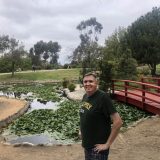In my previous post, I outlined a recent visit we took (finally!) to visit Chaco Canyon, the center of trade, culture and civilization in the southwest United States during the years of 800-1100. While fascinated with this World Heritage Site, we came away with more questions than answers, such as why the entire population of the community packed up and moved on abruptly after 300 years. This question is even more perplexing when looking at the main attraction: the incredible Pueblo Bonito.
 Named Pueblo Bonito, or Beautiful Town, by Lt. James Simpson who discovered the site in 1849, the site also has Pueblo, Hopi and Navajo place names. The Hopi and Pueblo peoples of New Mexico see Pueblo Bonito as an important part of their ancestral homeland; a place where clans stopped and lived during their sacred migrations. Traditional stories from many of the pueblo tribes as well as the Navajo know Chaco Canyon as the home of the Great Gambler who came from the south, enslaved the pueblo people and forced them to create the great buildings of Chaco before he was outwitted and driven away.
Named Pueblo Bonito, or Beautiful Town, by Lt. James Simpson who discovered the site in 1849, the site also has Pueblo, Hopi and Navajo place names. The Hopi and Pueblo peoples of New Mexico see Pueblo Bonito as an important part of their ancestral homeland; a place where clans stopped and lived during their sacred migrations. Traditional stories from many of the pueblo tribes as well as the Navajo know Chaco Canyon as the home of the Great Gambler who came from the south, enslaved the pueblo people and forced them to create the great buildings of Chaco before he was outwitted and driven away.
Pueblo Bonito is the most thoroughly investigated and visited site in Chaco Canyon. It was reportedly planned, as most buildings in Chaco, and constructed in stages during the years 850 and 1150. It was one of the Great Houses, including planned layouts, multi-storied construction, distinctive masonry, large rooms and plazas and huge subterranean ceremonial chambers called “great kivas,” places of spiritual practice. It is believed the great houses were public architecture, built for ceremonial purposes and used only periodically. They most likely did not have large residential populations.
The builders often oriented great houses to solar, lunar and cardinal directions, surrounding them with sophisticated astronomical markers. In fact there is a southeast-facing corner doorway high above the floor in one of the pueblo rooms. This unique doorway, unreachable without a climb, appears to function as an astronomical marker. When the sun rises on the morning of the winter solstice, sunlight passes through the opening and strikes the opposite room behind it. Chacoan use and knowledge of astronomy seems to have been an integral part of construction.
 Walls in Pueblo Bonito were constructed in core and veneer fashion. The core consisted of roughly shaped pieces of sandstone laid in a mud mortar. It is then faced on both sides with carefully selected and shaped stones to create the veneer. After Chacoans built walls, then typically applied plaster to most of them, concealing their fine stonework. This protected the mortar from rain, thus decreasing maintenance; a truly ingenious system of construction.
Walls in Pueblo Bonito were constructed in core and veneer fashion. The core consisted of roughly shaped pieces of sandstone laid in a mud mortar. It is then faced on both sides with carefully selected and shaped stones to create the veneer. After Chacoans built walls, then typically applied plaster to most of them, concealing their fine stonework. This protected the mortar from rain, thus decreasing maintenance; a truly ingenious system of construction.
A few other architectural details, doorways in Pueblo Bonito are knee high. One needs to step up to get into them and duck the head to get through. The pueblo was at one time five stories high and contained more than 600 rooms. Some of the rooms have as their only purpose to support the room above them; and were constructed merely to expand and support the structure to make it more impressive to visitors.
During our visit, we were privileged to attend a ranger tour conducted by Clif Taylor. Ranger Taylor pointed out these many unique features of Pueblo Bonito and explained the mysteries and lingering questions about the site. He took us into a room that had been built with roofing beams that were clearly visible. In spite of the fact that they were over 1000 years old, these beams were in exceptional condition, due to the fact that there were very well protected by the rooms constructed around them. Clearly a man who loves his job and has found his life’s work, Ranger Taylor was a highlight of our trip. Truly an historic place, Pueblo Bonito in Chaco Canyon is worth a trip. When you go, do not miss Ranger Taylor’s tour of this “Beautiful Town.”
Coming Next: Petroglyphs of Chaco Canyon
Read more about New Mexico campgrounds and things to do in New Mexico.








Carl Burroughs
LOL ! !
We did it in a Jeep Cherokee AFTER A RAIN ! !
Talk about slipping and sliding!! Almost lost it several times ! ! !
Jim Sweeney
We made the mistake of trying to get there from Grants,,,,on the south side. Wrong!!! A vicious road to try for about 14 or 20 miles. Not a wise road to take even if you have a Jeep.